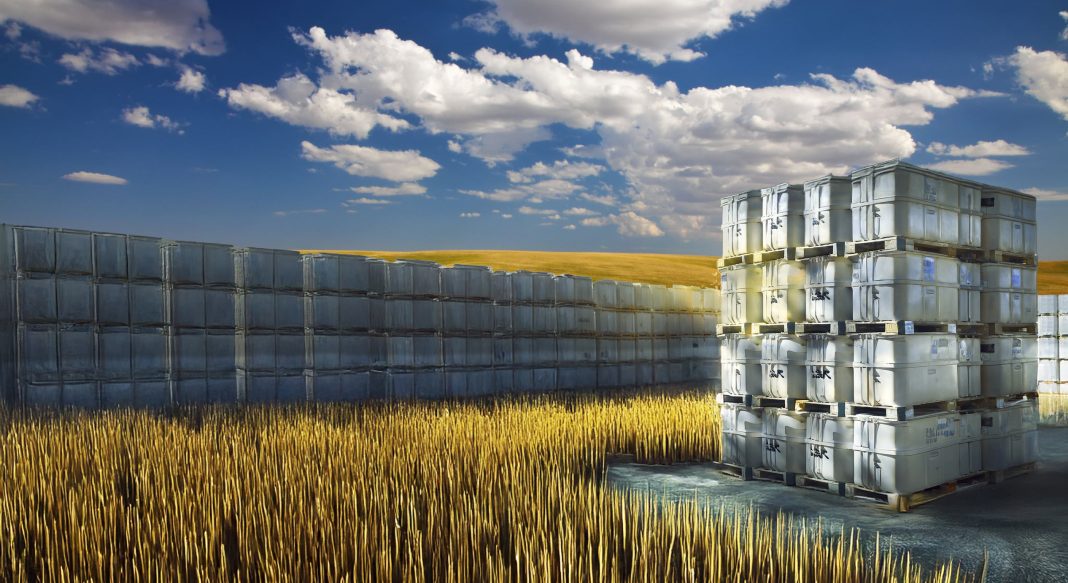Canada is positioning itself as a global leader in carbon dioxide removal (CDR) as it addresses climate change and creates economic opportunities for farmers. Beth McDaniel, JD from Reactive Surfaces explains how
As the world accelerates its efforts to combat climate change, removing existing carbon dioxide (CO2) from the atmosphere has become an essential tool in the fight to limit global warming. According to the International Energy Agency (IEA), as of early 2025, total operational carbon capture and storage capacity worldwide is just over 50 million tonnes per year. However, direct air capture (DAC) – technologies that capture and sequester CO2 directly from ambient air – represents only a small portion of that total, with current capacity standing at approximately 10,000 tonnes per year (IEA, 2025).
Looking ahead, the IEA projects that if all announced DAC projects proceed as planned, global capacity could reach 70 million tonnes per year by 2030. But that figure still falls far short of the scale required. The Intergovernmental Panel on Climate Change (IPCC) estimates that humanity will need to remove 3 to 12 gigatonnes of CO2 per year by mid-century to stay within the Paris Agreement’s 1.5°C target.
Against this backdrop, Canada is emerging as a global leader in carbon dioxide removal (CDR), thanks to a new wave of political leadership, policy innovation, and entrepreneurial energy.
A new era of leadership under Prime Minister Mark Carney
Since taking office in 2025, Prime Minister Mark Carney has made carbon management a pillar of Canada’s climate and economic policy. Carney’s Liberal Party platform included a landmark pledge to make Canada ‘a global leader in carbon removal and sequestration,’ establishing the country as a hub for carbon dioxide removal innovation. Just a few years ago, such an explicit commitment from a major G7 government would have been unthinkable.
Carney’s government has already begun implementing this vision through a series of targeted policies, including tax credits, market-based mechanisms, and legally binding removal targets.
This leadership is particularly critical as US political uncertainty around climate policy has caused momentum to stall south of the border.
Cross-party momentum and legislative champions
Canada’s CDR progress is not driven solely by the executive branch. Several lawmakers are playing pivotal roles in shaping the country’s CDR strategy.
Senator Rosa Galvez, Chair of the Senate Energy, Environment, and Natural Resources Committee, has long advocated for integrating scientific expertise into environmental policymaking. She was a key sponsor of the Canadian Net-Zero Emissions Accountability Act, which mandates transparency and accountability in achieving net-zero greenhouse gas emissions.
Senator Colin Deacon of Nova Scotia, who chairs the Senate’s Advisory Working Group on Environment and Sustainability, has been especially outspoken about the need to prioritize CO2 removal alongside emissions reduction. ‘We absolutely must prioritize the reduction of our collective emissions,’ Deacon recently wrote, ‘but if humanity is to protect itself from increasingly devastating and destructive climate events, we must also prioritize the removal of carbon dioxide (CO2) from the atmosphere.’
Deacon has also highlighted the strong economic incentives for DAC technologies, noting that some buyers are willing to pay up to ten times more for DAC carbon credits compared to Canada’s current benchmark carbon price of $80 per tonne (Deacon, 2025).
Agriculture: A new frontier for CDR
While Canada’s leadership in industrial-scale DAC and carbon capture infrastructure is impressive, an emerging area of opportunity lies in an unexpected sector: agriculture.
Canadian farmers are already global leaders in sustainable productivity. As Minister of Agriculture Lawrence MacAulay recently noted, Canadian farmers produce twice as much as they did 50 years ago, thanks to innovations in advanced crop and livestock genetics, zero-tillage, and precision agriculture (MacAulay, 2025).
However, agriculture’s next contribution to climate leadership may be even more transformative: helping to remove CO2 from the air, with all the economic benefits and incentives that come with a carbon removal business model.
Emerging innovation: Carbon capture surfaces
One of the most promising technologies in the CDR space is Carbon Capture Surfaces (CCS), developed by US innovation company, Reactive Surfaces. Unlike traditional DAC systems, which require energy-intensive fans and deep geological sequestration, Carbon Capture Surfaces utilize micro-algae on thin-film coatings to passively capture CO2 from ambient air. The captured CO2 can be durably sequestered in the form of biochar. This by-product soil amendment can be used to improve soil health or utilized to create other valuable byproducts, including feedstocks for animals and other carbon-based commodities.
The agricultural potential of this technology is immense. Farmers can deploy Carbon Capture Surfaces on land that is otherwise fallow or not suited for food production, enabling them to generate carbon removal credits and offset their own carbon footprints. Moreover, farmers can access CDR tax credits and participate in evolving carbon markets, providing an entirely new revenue stream.
Importantly, farmers are ideally equipped to scale nature-based DAC. They already manage large areas of land, understand land stewardship, and can easily integrate surface-based systems into their existing operations.
Canada is rapidly proving that it can lead the world in carbon dioxide removal. The vision and leadership of Prime Minister Carney and Minister of Agriculture, Lawrence MacAulay, combined with bipartisan support from legislators like Senators Galvez and Deacon, are laying the groundwork for scalable, market-driven CDR solutions.
Now, with farmers poised to play a transformative role through innovations like Carbon Capture Surfaces, Canada has the opportunity to create a uniquely inclusive, scalable, and nature-based model for DAC – one that could serve as a global example. In doing so, Canada is not only helping to close the global carbon gap but is also creating new economic opportunities for its agricultural sector and driving a sustainable future for generations to come.


